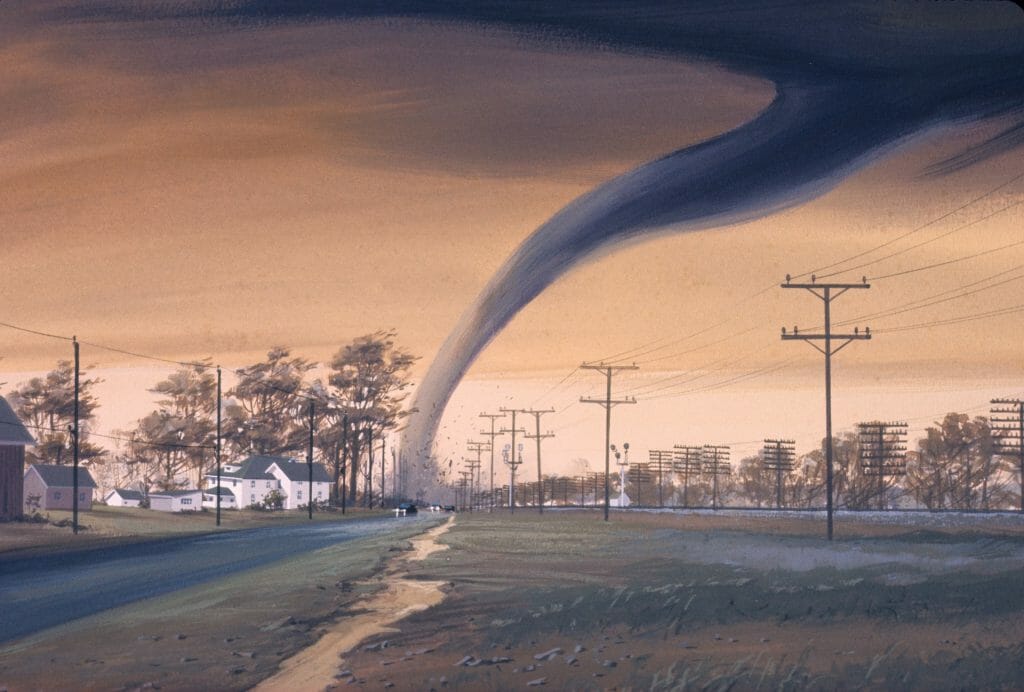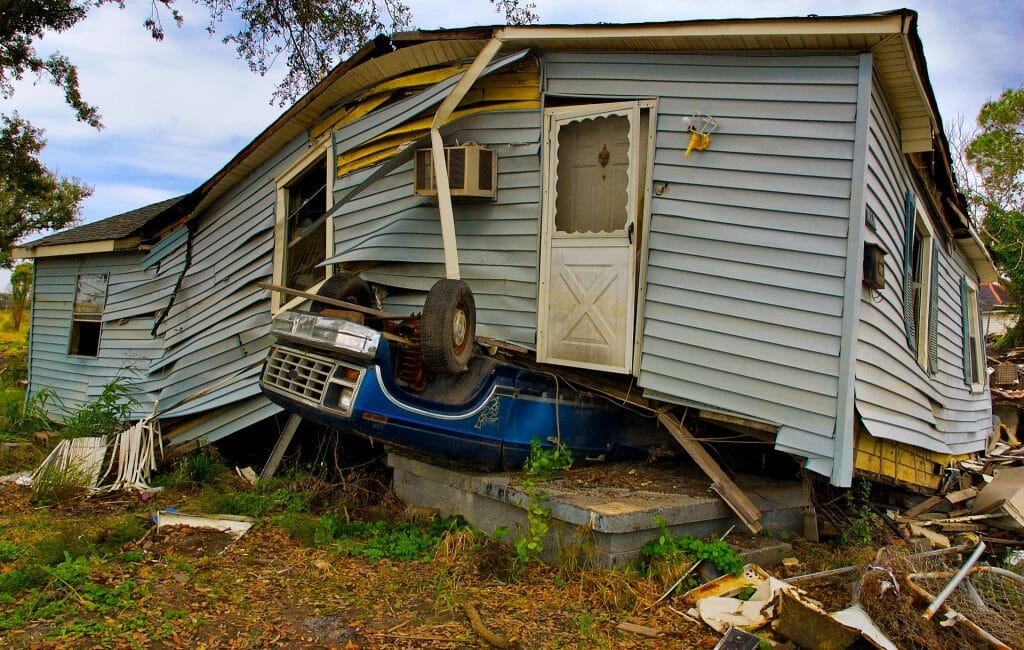A natural disaster can happen at any time and without warning. That is why homeowners associations (HOAs) need to have a safety plan before one hits. In this article, we discuss the duties and obligations of HOAs during an emergency, and how to create a safety plan for your HOA. Having a plan in place can help ensure that your HOA and its members are prepared for any type of emergency!

What HOAs Should Be Prepared For
HOAs should be prepared for any type of emergency that could affect their community. While what might affect you may largely be dictated by your location, common disasters to consider include, but are not limited to:
- Fires – California Wildfires are the first to come to mind, as they have been an increasing issue for several years. You can read more about HOAs VS California Wildfires in this article we published in 2021. With that being said, however, wildfires are on the increase throughout the United States. States such as Florida, Oklahoma, Texas, Nevada, and Idaho are seeing more acres burned than ever before.
- Floods – While not as common as wildfires, floods can wreak havoc on an HOA and its members, and are on the rise due to extreme weather onslaughts. Areas with historically dry conditions are more susceptible to flooding if a heavy-rain storm comes in. It is important for you to look at your area’s flood maps (which can be found at FloodSmart.gov), which can also provide you with information how to plan for a flood appropriately.
- Tornadoes – One of the most destructive weather events, tornadoes can occur anywhere in the United States. They are most common in the Midwest and South, but have been known to happen as far north as Michigan and Minnesota. It is important to identify the safe spaces where you can take shelter during a Tornado warning, even if you may not think you’ll have one in your area.
- Winter Storms (snow and ice) – Also becoming more common are onslaughts of freezing temperatures, causing a myriad of problems for communities. Understanding what your community may deal with under these circumstances and how to provide safety to your members is an important precaution to take.
As you can see, there are a variety of natural disasters that could affect your HOA. While this list is not exhaustive, it should give you an idea of the types of emergencies you should prepare for. A helpful resource for finding the risks your area may face is the FEMA National Risk Index. Featuring a National Risk Index Map, which breaks down every known disaster likelihood by counties and severity, you can also find FAQs, how to take action, and how to get help.
HOA Duties and Obligations, and Understanding Expanded Powers During an Emergency
Before an emergency, HOAs have a duty to provide essential services to their members. This includes maintaining common areas, providing security, and ensuring that the property is safe for occupants. However, during an emergency, HOAs have an extended responsibility to help members evacuate safely and provide them with information about how to stay safe during the disaster. Obligations include, but are not limited to:
- Execute and oversee evacuation efforts on the property
- Restrict or prohibit access to the community
- Shut off utilities
- Hire security guards
- Enforce curfews
It is important to stay up-to-date with your state’s HOA Laws and the obligations you have to your members and community. We recently covered New HOA Laws for California in 2022 but encourage you to do a quarterly review if you are independently managing your HOA.

How to Create a Safety Plan for Your HOA
When creating a safety plan for your HOA, there are a few key things to consider. First, you will need to identify the potential hazards that could affect your HOA. As we covered earlier in this article, this could include hurricanes, floods, wildfires, or even earthquakes. Once you’ve defined all of the events you and your HOA should be prepared for, it’s time to start creating your safety plan. Here are key steps to follow and focus on:
Appoint a Disaster Preparedness Committee
This committee is vital to the success of any HOA Safety Plan, and it is extremely important that those stepping into this role must understand their role, responsibilities, and obligations. They will be tasked with not only helping to develop and implement your safety plan, but will also be responsible for staying up-to-date with updates as well as reacting calmly and completing the tasks delegated to them as outlined in your Safety Plan when the time comes.
It is suggested that you assign small tasks evenly throughout your team and have members cross-trained so everyone can step in where needed. In addition, your HOA should have a system in place for communicating updates and information during an emergency. This could include email, text messages, or even a phone tree.
Putting communication as a top priority during any disaster response is the most important thing you can do on behalf of your HOA members. This will help lessen panic, and allow for the safe execution of your disaster plans.
Identify an Evacuation Route and Safe Meeting Place
Your HOA should have a designated evacuation route and safe meeting place whenever members may need to evacuate the property during an emergency. Your evacuation routes should be clearly marked and easy to follow. The routes should be free of any debris and accessible to all members of your HOA. Your safe meeting place needs to provide ample space for your members to gather.
We suggest ensuring all members are aware of the evacuation routes and know how to get to them annually. Ensure this information is included in your safety plan and communicated to all members ahead of time. In addition, you should also consider providing maps of the evacuation route to each member’s household.
Stockroom of Emergency Supplies
This room should be stocked with enough supplies to last your HOA for at least 72 hours. Some of the items you will want to include are non-perishable food, water, first-aid supplies, flashlights, and batteries. You may also want to consider investing in a backup generator in case of power outages. Ensure that these supplies are located in an area that is safe and protected from the elements and is easily accessible to you and your community when the time comes. Lastly, regularly review and replace expired products in your stockroom.
Communication Plan and Emergency Contact Information
Your HOA should also have a communication plan in place, which should be available as a hard copy. This plan should include things like who will send out updates and information during an emergency, how members can contact the HOA, and what type of information will be shared. In addition, make sure you have addressed what to do if the phone lines are down or the power is out.
It is also a good idea to find out what emergency responses are available in your area and include this in your Communication Plan. For example, if the Red Cross or Government-provided Disaster Assistance has a plan to assist your area during a disaster, include information on how to access their resources in your hard copy.
Finally, it is important to have a plan for what will happen after the disaster has passed. This could include having a contractor on standby to help with repairs or arranging for temporary housing for displaced members. Once you’ve compiled this information, ensure it is located in your Communication Plan hard copy.
Protecting Your HOA, As a Business
While working to ensure the safety of your members, it is also important to ensure you’ve protected your HOA. Make sure to have all your association’s records in a safe location. Your HOA secretary should be in charge of backing up important files such as governing documents, insurance policies, bank account numbers, minutes, and contracts. These files should be kept safe, such as a safe deposit box.
Your budget should also account for possible disaster expenses. Be sure to review insurance policies with your agent to review risks, coverage, deductibles, and procedures. Take an inventory of all major facilities such as the pool, clubhouse, and tennis courts. Not only with this hasten insurance claims after a disaster, but also provide valuable insight on how to adjust your budget.
Lastly, create a plan for cleanup after a disaster. This should include a safety checklist and cleanup execution plan for the varying severities. For example, if no damage is visible, who will inspect to ensure there is no danger to your members? If damage is visible, who is responsible for cutting the power and calling a cleanup crew. Ensure you have a list of vendors that can be called to help and keep it, along with your cleanup checklist and execution plan in the hard copy of your Communication Plan.
After a disaster has struck, it is important to follow your HOA’s safety plan. This will help ensure that everyone is safe and that the HOA property is protected to the extent possible. In addition, you will also need to contact your insurance company and file a claim. Be sure to keep all receipts and documentation of the damage as this will be needed for the insurance claim. You may also need to contact vendors on your list in order to get started on the cleanup process. Finally, rely on your Disaster Preparedness Committee to make sure you’ve completed all the steps you’ve outlined in your Safety Plan.
Before the Disaster, Consider Partnering with a Professional HOA Management Company
With the uncertainty we’ve been facing with climate change and never-before-seen challenges, now is the best time to consider working with a professional HOA management company like AMC Inc. (Association Management Concepts). We’ll provide full-service board training and a complete breakdown of your emergency preparedness needs. Contact us at 916-565-8080, ext. 321.




